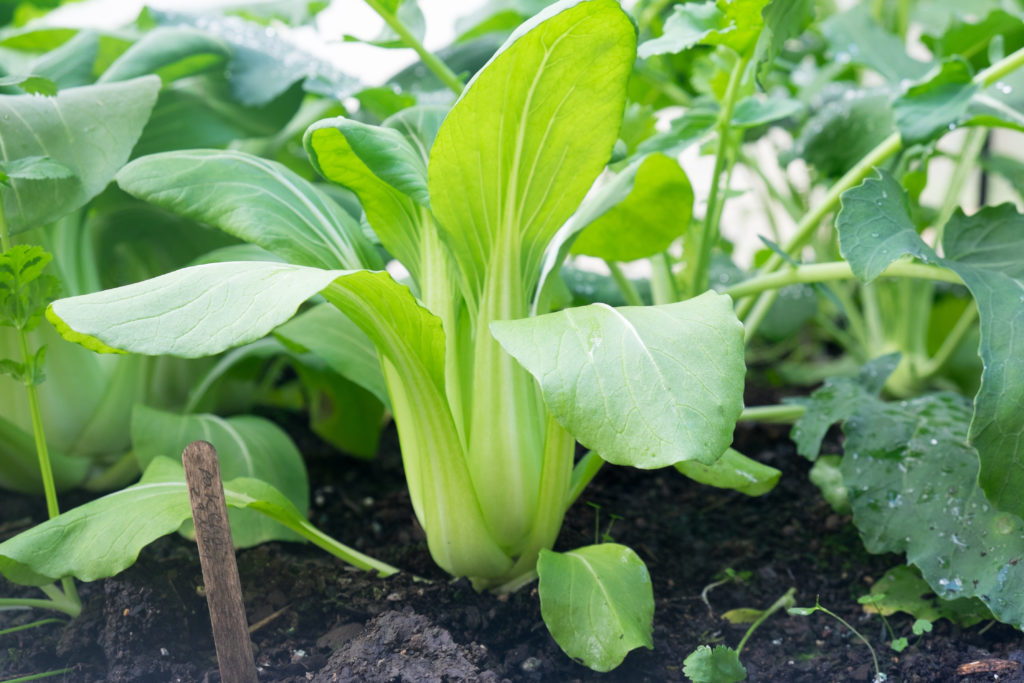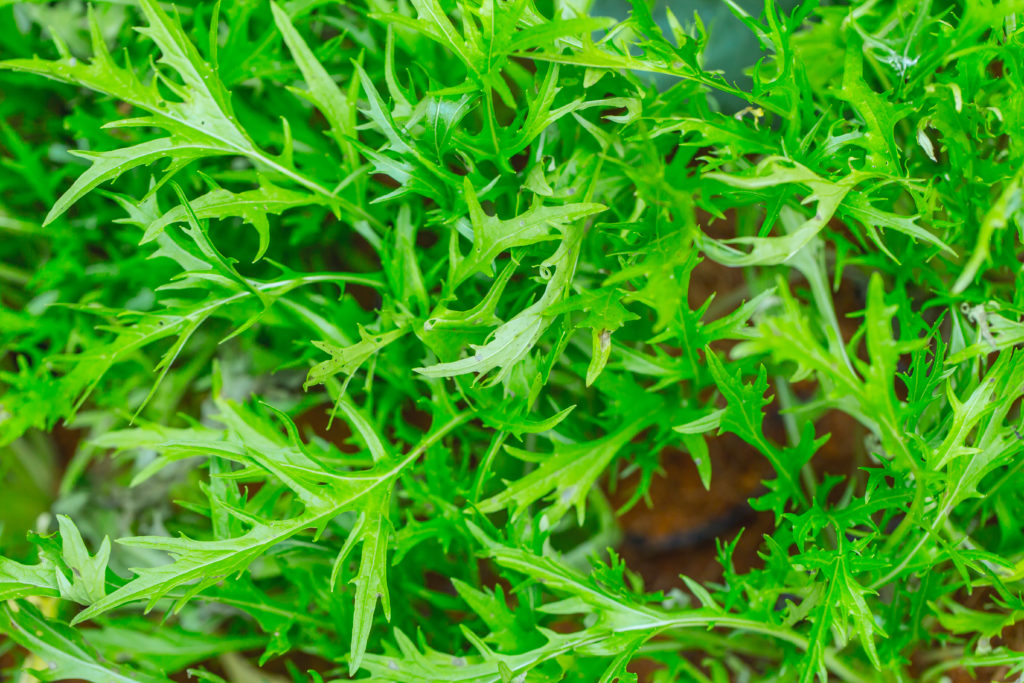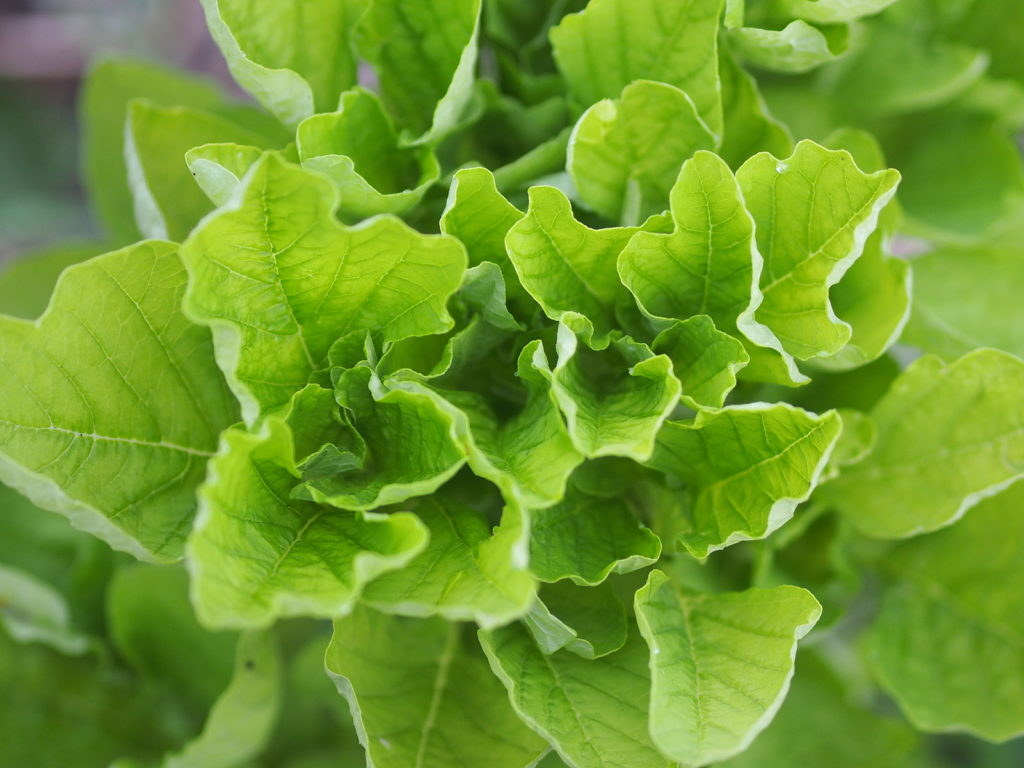Crispy, succulent, and sweet-flavored Asian greens are easy to grow and demand little space. Like other greens such as lettuce and spinach, they are cool-season crops and prefer to reach maturity in cool air temperatures. They are quick growing and well suited for sowing in spring for late spring harvest or late summer for autumn harvest. They are easily grown through the winter in mild-winter regions or under the protection of a plastic tunnel or cold frame in cold winter regions.
Grow Asian greens—Pak Choi, tatsoi, mizuna, leafy mustard, and edible leaf amaranth– as stand-alone crops or tuck them into spots in the garden where other crops have finished. Harvest Asian greens all at once or cut-and-come.
Serve Asian greens raw in salads or cooked quickly in stir-fries, sautés, and soups. Asian greens are easy flavor matches for chicken, beef, and pork and vegetables like garlic, mushrooms, beans, and peas.
Asian Greens for Cool-Weather Harvest:

• Pak Choi (also called Bok Choy: 45 to 55 days to harvest)
Pak Choi is a mild, sweet leafy green with juicy white stalks. It has a slightly turnip-cabbage flavor and forms an upright, vase-shaped head to about 12 inches tall with spoon-shaped, open, flat, or slightly wavy leaves. The white stems are crunchy and delicately sweet.
Hybrids of Pak Choi include Joi Choi (55 days) which is both heat and cold tolerant, and Mei Ling Choi and Green Fortune which are both sweet and crispy and only grow to 6 inches tall.
Sauté Pak Choi quickly in butter to highlight its delicate flavor or steam it in just a minute or two to keep it just crunchy. See How to Cook and Serve Bok Choy
• Tatsoi (also called Tah Tsai; 45 days to harvest)
Tatsoi is tender, sweet, and crunchy. Its deep green, shiny, spoon-shaped leaves on small green stems grow in flat rosettes reaching 12-inches in diameter. Sow tatsoi directly in the garden in early spring and in autumn do not rush it to harvest; it is cold tolerant and can withstand even light snow.
Tatsoi is well suited for mesclun mixes; leaves can be harvested young cut-and-come-again. Young plants can also be harvested whole for salads and stir-fries. Heads allowed to reach full-size should be harvested before flower buds start to form. Mature leaves are suited to stir-fries and soups with meat and garlic and ginger seasoning. Sauté tatsoi until it just wilts in butter or olive oil.

• Mizuna (also called pot-herb mustard; 40 days to harvest)
Mizuna is a delicate member of the cabbage family; it has finely cut, frilly, deep green leaves with juicy, narrow, white midribs. Mizuna forms a rosette and grows to just about 12-inches tall. Sow mizuna directly in the garden; it is highly adaptable to most soils and a wide range of weather. Harvest the whole plant or individual leaves cut-and-come-again. See How to Grow Mizuna
Mizuna brings a mild somewhat mustardy, spicy flavor to salad mixes and also can be sautéd (with garlic and onions) or steamed briefly until tender.

• Green and Red Leafy Mustard (28 to 42 days to harvest)
Grow mustard greens for harvest as baby greens; they will be tender and have a mild, yet pungent flavor just like Dijon mustard. For best flavor, grow mustard in soil rich in organic matter and well-drained. Mustard easily grows in cool soil.
Mustard forms loose rosettes of spoon-shaped wavy leaves. Mustard is ready to harvest in less than a month and reaches maturity in six weeks.
Add young, tender mustard leaves to green salads along with or as a substitute for lettuce. It is savory when quickly steamed. See How to Grow Mustard Greens

• Edible Leaf Amaranth (50 days to harvest)
Edible Leaf Amaranth has a sweet, nutty, spinach flavor and is best picked young and tender. Leaves are heart-shaped, crinkly green with burgundy centers. The plant can grow to three feet tall, but leaves are most tasty picked cut-and-come again at 4 to 5 inches long.
Edible Leaf Amaranth is a hot-weather substitute for spinach; it is a good choice for late summer and autumn growing. Two varieties to grow are Green Leaf and Mirah Red. Amaranth grows best in rich, well-drained soil.
Serve leaf amaranth as baby greens or sauté quickly in water that clings to the leaves.
Asian Greens Growing Tips:
- Direct sow or transplant into compost-rich, well-drained soil.
- Thin seedlings to the spacing indicated on the seed packet, so that leaves just touch at maturity; use thinnings in salads and sautés.
- Feed greens with fish fertilizer or liquid kelp to ensure rapid growth.
- Keep the soil evenly moist to encourage rapid growth and the best flavor.
- Protect plants with row covers from insects such as flea beetles and cabbage worms.
- Watch for snails and slugs and handpick or trap them.
- Plant in succession for extended harvest or have seedlings at the ready to tuck into empty space in the garden late in the season.
- Harvest some leaves young cut-and-come-again for salads; let others grow to full-size for stir-fries and sautés.
Also of interest:
Chinese Vegetables: Warm-Season Varieties
Chinese Vegetables: Cool-Season Varieties















